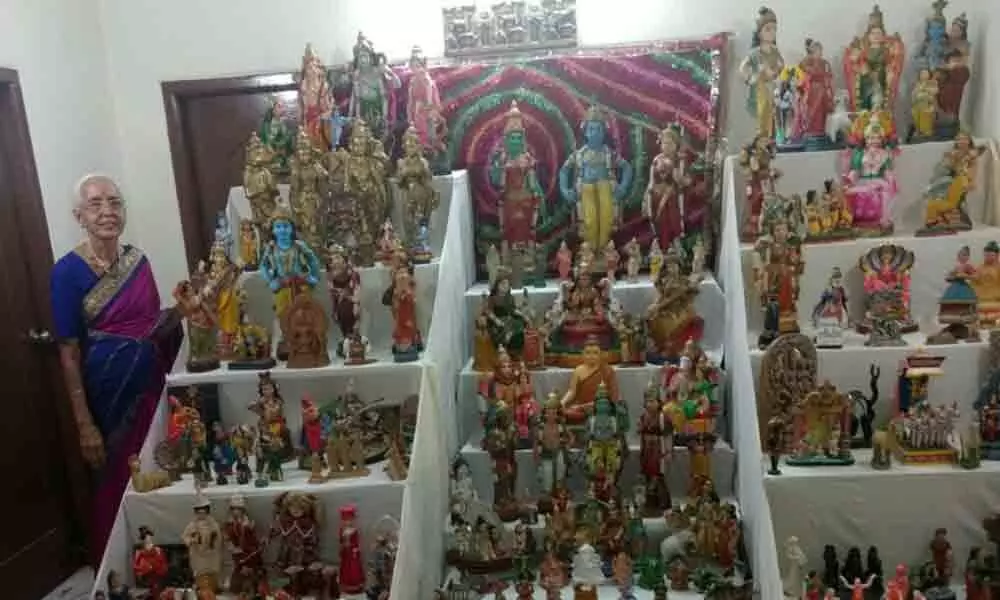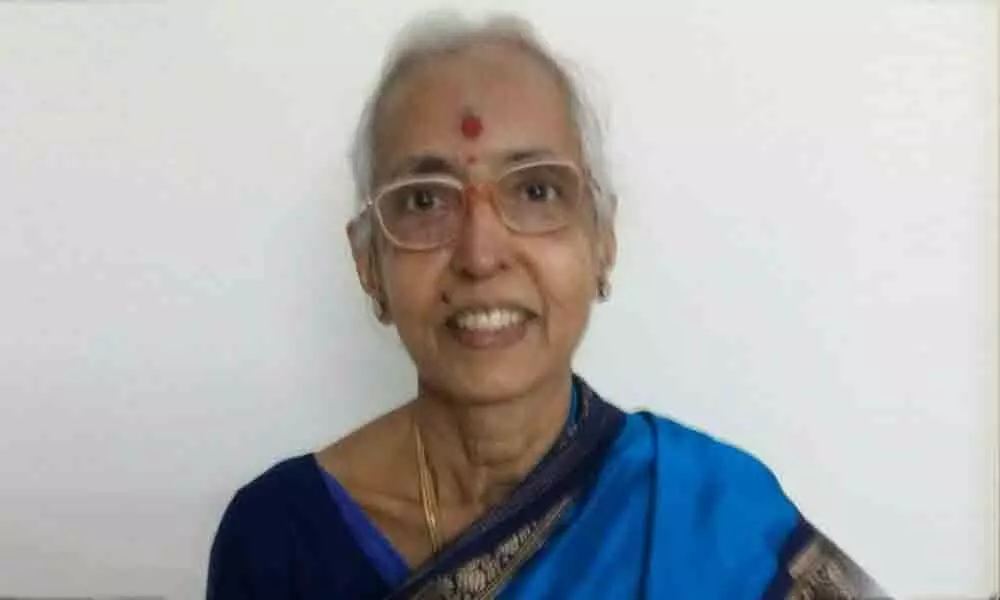Live
- Punjab seeks central assistance to strengthen security in areas adjoining Pakistan
- Malaysian national held from Tamil Nadu for cyber fraud of Rs 2.81 crore
- Child marriage will be eradicated by 2026: Assam CM
- PMK President Anbumani Ramadoss urges TN government to act against online gambling
- From defence to culture and sports, India and Kuwait sign key agreements during PM Modi's visit
- Mahakumbh 2025: 110 mist blower machines and 107 fogging units to keep Akharas insect-free
- Piyush Goyal participates in Mahila Shakti Shivir event, calls Bima Sakhi Yojana 'a revolutionary initiative'
- Death toll from Cyclone Chido in Mozambique rises to 94
- 13 criminals from two gangs arrested in Jharkhand's Ramgarh for extortion
- Union Minister Bandi Sanjay Visits Injured Boy Sritej at KIMS Hospital
Just In
Dasara heralds the Navaratri celebrations, which is agog with devotion, joy, music and dance. The festival also symbolises the victory of good over evil. The nine days people venerate the goddesses of the Hindu pantheon in various ways. It is an occasion of fasting (in some parts of India) and feasting in others. The sacred and the secular coalesce during Dasara. Amongst the varied celebrations during Navaratri, the 'Kolu' (as it is known in Tamil) or 'Bommalakolu' (as it is known in Telugu) is well-known, especially in southern India.
In Tamil Nadu, the 'kolu' – the practice of arranging dolls for display (made of different materials) in steps of odd numbers is common. The 'kolu' bonds the families together as they celebrate it over nine days. It also provides a platform to socialise as women and children are invited by the woman, who has organised the 'haldi-kumkum'/ 'tambulam'. For children, it is a fun occasion as they help in arranging things and get to feast on goodies like sweets and sundal!
Come Mahalaya Amavasya the steps (which are fixed) or other pieces of furniture or boxes which are converted as makeshift steps are brought out. The packed dolls are removed and arranged. The dolls and objects are varied – images of gods, goddesses, animal figures/figurines and other objects are (mostly 'religious' and 'spiritual' arranged in arresting ways to captivate the viewers. Depending on the ingenuity of the person organising and the dolls/objects the visualisations are different. Uma interestingly reveals how the concept of 'kolu' came about. She says, "Durga has a lot of shakti. Durga shares this with all the devatas. When she had to slay the demon Mahishasura she needed that 'shakti' back. So, the devatas give the 'shakti' back to her and they become the dolls as they lose their power. After Durga slays the demon she gives back the power to them and they come back to life!"
'Kolu' has become a tradition with some women and households as they have been organising it for decades. Kamala Rangarajan has been organising the 'kolu' for the last 25 years in Hyderabad (ever since they came to the city). "I have been seeing and participating in the 'kolu' at my parental home since I was young. After marriage, I did it along with my mother-in-law. Jayanthi (working in a big corporate and a marathon runner) too has been involved in 'kolus' since childhood and now she has been organising for the past 17-18 years. Lakshmi's mother used to keep 'kolu' during Sankranti but after marriage, Lakshmi's mother-in-law used to organise during Dasara and Lakshmi continues this practice during Navaratri. The 'kolu' is a religious and social custom. Mainly the 'kolu' also involves puja (obeisance to the goddesses) and 'prasadam', which is offered to the goddesses and the visitors, who come to see the 'kolu'.
At times the 'kolu' is arranged on the basis of a theme/concept. Most of it is religious/spiritual. Lakshmi says, "I normally think of the concept six months back and work towards it. I source the dolls from different parts. Some are custom-made by Ramani (who makes beautiful dolls) in Nagpur." This year she has worked on festivals of south India depicting all the elements of the festivals (in all the five states Onam, Pongal, Sankranti, Bathukamma and Bonalu and Mysore Palace Dasara) besides the regular tiered 'kolu'. Kamala Rangarajan, on the contrary, makes specific dolls on her own every year depicting scenes from mythology, Ramayana and Mahabharata. All her unique hand-crafted dolls are arranged in a separate room. Some of the dolls in her collection are nearly a century old being handed over the generations. Her handcrafted dolls are made of diverse materials from varied materials like cotton, clay, 'kuthivilakku' (oil lamps on stand) and even other discarded items. "This year, for instance, I used a discarded tube of a burst tyre into a nine-headed 'sesha' (snake) for the creation of Lakshmi Narasimha. Other interesting things include the usage of a piece of LPG tube, which has been transformed into Ranganatha's Adisesha. A discarded tea strainer coupled with a zip and toothpaste tube has metamorphosed into a veena. Her creations include Meenakshi, Srinivasa, Andal, Vibhishana's 'Saranagati' (Vibhishana surrendering to Rama), Rama and Sita Kalyanam, Hanuman carrying Rama and Lakshmana, etc. Other non-religious ones include a Carnatic music scene, dolls dressed up as people from different parts of India.
Children play an integral role in not just helping with the arrangement but also conceptualise and put together different scapes like a village, town, etc. For them, this 'kolu' captures their creativity. Lamps are lit both morning and evening and prasadam(s) are made to be distributed to the visitors. Music is quite an integral component of the 'kolu' as some of the guests who come sing mostly Devi songs.
The 'kolu' offers a perfect platform to socialise. "People are busy these days and it is difficult to meet people. The 'kolu' provides a perfect opportunity to meet people as they come home," says Kamala Rangarajan. Jayanthi adds, "the 'kolu' offers a reason to meet. The 'kolu' is also educational for children and leaves a deep impression on their minds!
To sum up, the 'kolu' brings the sacred and the profane together to offer the viewers delight and joy in this stress-ridden world!

© 2024 Hyderabad Media House Limited/The Hans India. All rights reserved. Powered by hocalwire.com












